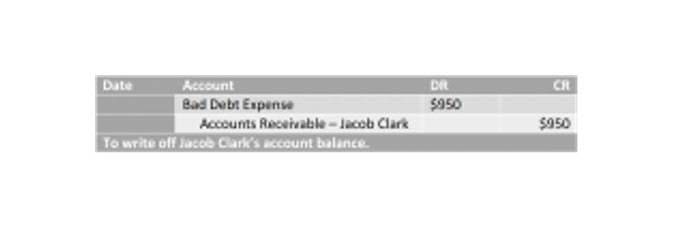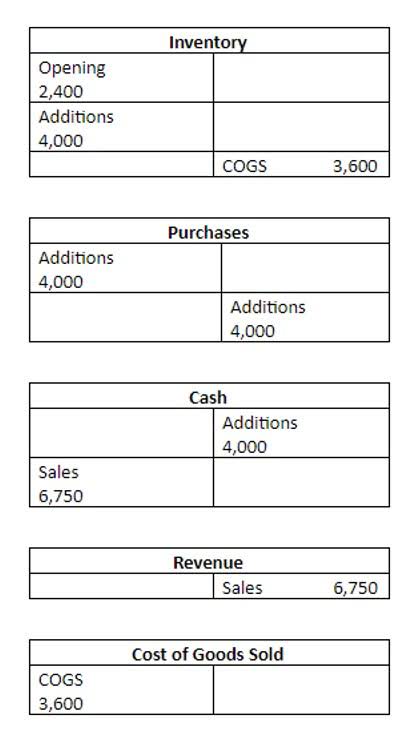
For the revenue accounts, debit entries decrease the account, while a credit entry increases the account. On the other hand, a debit entry increases an expense account and a credit entry decreases it. The credits and debits are recorded in a general ledger, where all account balances must match. The visual appearance of the individual accounts resembles a T-shape. Yes, T accounts can help detect fraud or errors in accounting records by providing a detailed trail of transactions. Discrepancies between debits and credits or unusual patterns in T accounts may indicate fraudulent activity or errors that require further investigation.
Automate T Accounts with Online Software
- For example, you might ask, “How do I calculate the balance of a T Account in Excel?
- Thousands of people have transformed the way they plan their business through our ground-breaking financial forecasting software.
- The nature of each transaction can also be quickly determined.
- If transactions are recorded incorrectly in a T-account, the mistake carries over to financial reports.
- The balances in T accounts are aggregated to create the balances needed for financial statement preparation.
Put your dividends, expenses and assets on the left of the T account to increase them. Liabilities, Owner’s Equity and Revenue go on the right to increase them. For a lot of people, the balance sheet is one of the hardest financial statements to get to grips with. Any transaction a business makes will need to be recorded in the company’s general ledger. The general ledger is divided up into individual accounts which categorise similar transaction types together. A T-account is a visual way of displaying a set of financial records that use double-entry bookkeeping.
Balancing T-Accounts

The T-account is also helpful in tracking track debits and credits to find accounting errors in journal entries. T-Accounts are a fundamental tool in accounting, and they play a crucial role in the accounting process. A T-Account is a visual representation of a company’s financial transactions Cash Flow Management for Small Businesses that are used to record and analyze the financial data.

Using T Accounts for Transactions: A Step-by-Step Guide
- This setup allows you to see at a glance how each transaction impacts your account balance, making it a valuable tool for financial analysis.
- T-accounts are essential tools in accounting as they provide a clear and visual method for organizing and analyzing transactions.
- Let us understand the format of a T account ledger and how it is designed in a way where it gives the individual reviewing it an ease of locating entries.
- When you’re done, you can quickly see the balance by tallying up the two sides.
- T accounts are clear, visual representations of a business transactions that take the form of a “T” – one side for debits, one for credits.
- We will analyze and record each of the transactions for her business and discuss how this impacts the financial statements.
- Understanding trial balance is essential for maintaining accurate financial records.
The T-account guides accountants how to do t accounts on what to enter in a ledger to get an adjusting balance so that revenues equal expenses. Remember, mastering the basics is the foundation for financial success. Use them to track your business transactions, analyze your budget, or even impress your friends with your accounting prowess. Now you’re equipped to tackle those transactions with confidence, understand your business finances like a pro, and make smarter decisions for the future. T accounts assist in budgeting and financial planning by tracking expenses, revenues, and other financial activities. Individuals and organizations can use T accounts to compare actual financial performance again.
- The debit is the larger of the two sides ($5,000 on the debit side as opposed to $3,000 on the credit side), so the Cash account has a debit balance of $2,000.
- Yes, T accounts can be used in computerized accounting systems.
- This is posted to the Cash T-account on the debit side beneath the January 17 transaction.
- Cash is labeled account number 101 because it isan asset account type.
- The left side is for debits, and the right side is for credits.
- They’re like little filing cabinets for your financial information, with a fancy T-shape that helps visualize debits and credits.
Cash Account

They make it easy to record transactions and understand the basics of accounting. This is crucial for keeping your financial records in tip-top shape. Think of a T-account as a simple visual tool that helps you see how transactions affect a business’s accounts. Even with the disadvantages listed above, a double entry system of accounting is necessary for most businesses. This is because the types of financial documents both businesses and governments require cannot be created without the details that a double entry system provides.


The difference between the current balance and the needed ending balance is the amount for the adjusting entry. In the journal entry, fixed assets Accounts Receivable has a debit of $5,500.This is posted to the Accounts Receivable T-account on the debitside. This isposted to the Service Revenue T-account on the credit side. You will notice that thetransaction from January 3 is listed already in this T-account. Thenext transaction figure of $4,000 is added directly below the$20,000 on the debit side. This is posted to the Unearned Revenue T-account on thecredit side.